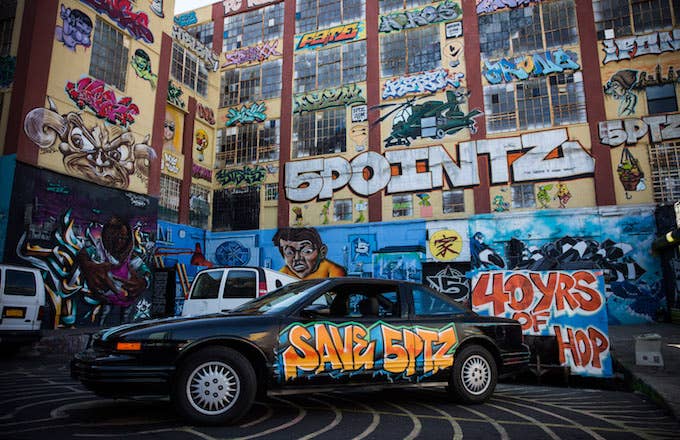
Justice has finally been served in the name of street art. Judge Frederic Block has awarded 21 artists who were part of the iconic 5 Pointz crew a staggering $6.7 million after a developer decided to destroy revered works at the mural space in Long Island City, Queens.
The destruction of 5 Pointz was a controversial one for both New York City residents and lovers of the culture, as it signaled the city's continuous incentives to remove the beauty and authenticity of its neighborhoods to only gentrify it with luxury condos (in 5 Pointz's case), or the umpteenth Starbucks location.
The artists' graffiti was painted over in 2013 and the buildings were demolished a year later. Developer Gerald Wolfkoff was behind the move, ordering 45 pieces to be whitewashed at the time, which immediately sparked local outrage. The artists later sued under the Visual Artists Rights Act, a 1990 law that protects artwork of "recognized stature."
Block wrote:
"The shame of it all is that since 5 Pointz was a prominent tourist attraction, the public would undoubtedly have thronged to say its goodbyes during those 10 months and gaze at the formidable works of aerosol art for the last time. It would have been a wonderful tribute for the artists that they richly deserved. If not for Wolkoff’s insolence, these damages would not have been assessed. If he did not destroy 5 Pointz until he received his permits and demolished it 10 months later, the Court would not have found that he had acted willfully."
The judge continued to praise the artists, saying they "conducted themselves with dignity." Wolkoff, who owned the buildings, and his legal team stated he allowed them to use the walls as a canvas and claimed they were aware the buildings would be torn down eventually. His argument clearly proved unsuccessful.
"Wolkoff could care less. As he callously testified," the judge said. "The sloppy, half-hearted nature of the whitewashing left the works easily visible under thin layers of cheap, white paint, reminding the plaintiffs on a daily basis what had happened. The mutilated works were visible by millions of people on the passing 7 train."

